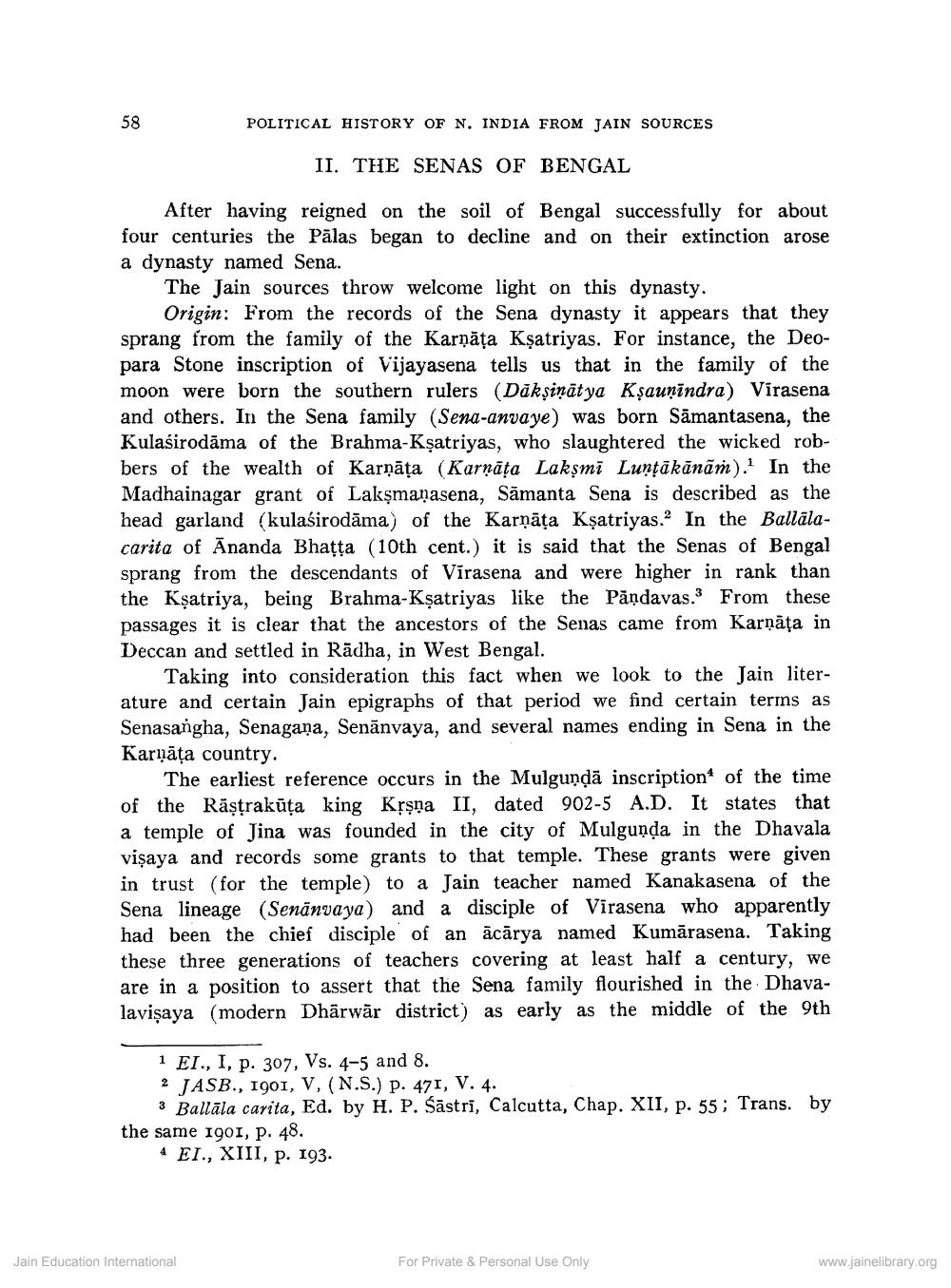________________
POLITICAL HISTORY OF N. INDIA FROM JAIN SOURCES
II. THE SENAS OF BENGAL
After having reigned on the soil of Bengal successfully for about four centuries the Pālas began to decline and on their extinction arose a dynasty named Sena.
The Jain sources throw welcome light on this dynasty.
Origin: From the records of the Sena dynasty it appears that they sprang from the family of the Karņāța Kșatriyas. For instance, the Deopara Stone inscription of Vijayasena tells us that in the family of the moon were born the southern rulers (Dākṣinātya Kșaunindra) Virasena and others. In the Sena family (Sena-anvaye) was born Samantasena, the Kulasirodāma of the Brahma-Ksatriyas, who slaughtered the wicked robbers of the wealth of Karņāța (Karnāța Lakşmi Lunțākānām). In the Madhainagar grant of Laksmanasena, Sāmanta Sena is described as the head garland (kulasirodāma) of the Karnāta Kşatriyas. In the Ballālacarita of Ananda Bhatta (10th cent.) it is said that the Senas of Bengal sprang from the descendants of Vīrasena and were higher in rank than the Ksatriya, being Brahma-Ksatriyas like the Pandavas. From these passages it is clear that the ancestors of the Senas came from Karnāța in Deccan and settled in Rādha, in West Bengal.
Taking into consideration this fact when we look to the Jain literature and certain Jain epigraphs of that period we find certain terms as Senasangha, Senagana, Senānvaya, and several names ending in Sena in the Karņāța country.
The earliest reference occurs in the Mulguņdā inscription of the time of the Rästrakūta king Krşņa II, dated 902-5 A.D. It states that a temple of Jina was founded in the city of Mulgunda in the Dhavala vişaya and records some grants to that temple. These grants were given in trust (for the temple) to a Jain teacher named Kanakasena of the Sena lineage (Senänvaya) and a disciple of Virasena who apparently had been the chief disciple of an ācārya named Kumārasena. Taking these three generations of teachers covering at least half a century, we are in a position to assert that the Sena family flourished in the Dhavalavişaya (modern Dhārwār district) as early as the middle of the 9th
1 EI., I, p. 307, Vs. 4-5 and 8. 2 JASB., 1901, V, (N.S.) p. 471, V. 4.
3 Ballāla carita, Ed. by H. P. Šāstri, Calcutta, Chap. XII, p. 55; Trans. by the same 1901, P. 48.
4 EI., XIII, p. 193.
Jain Education International
For Private & Personal Use Only
www.jainelibrary.org




